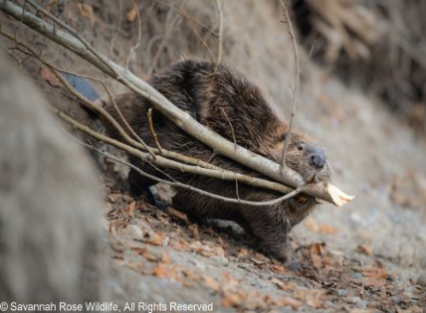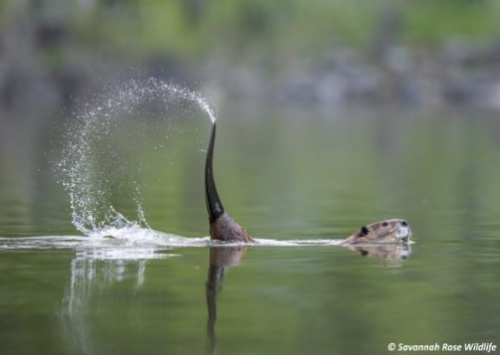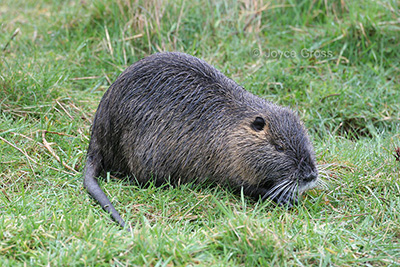
The American beaver (Castor canadensis) is the only species of beaver found in California. American beavers are more commonly distributed. By the early 1900's, American beavers had nearly gone extinct due to the demand for beaver pelts as part of the fur trade.
As ecosystem engineers, beavers provide many ecological benefits. Natural activities, such as building dams, can create new wildlife habitat, regulate water flow, reduce the intensity of fire on a landscape, and improve water quality downstream. However, these same activities may cause concern of property damage to crops, timber, or human infrastructure.

Prevent Potential Conflicts
Similar Semi-Aquatic Mammals
Other semi-aquatic mammals, such as river otters or nutria, may be found alongside beaver in rivers, streams, lakes, ponds, and wetlands. River otters (Lontra canadensis) are a native species. With a streamline body and thick tail, river otters are adapted for hunting in rivers, estuaries, and wetlands. They feed on fish, crustaceans, insects, birds, and even small mammals. Potential conflict with river otters may occur due to human health or safety concerns; they may become territorial and aggressive when protecting a den site. Nutria (Myocastor coypus) are an invasive species. They somewhat resemble a beaver; but are smaller and have a long rat-like tail. Nutria can cause significant damage to California native plant communities, wetland habitats, and agricultural crops.
 Nutria (Myocastor coypus).
Nutria (Myocastor coypus).
 River Otter (Lontra canadensis).
River Otter (Lontra canadensis).